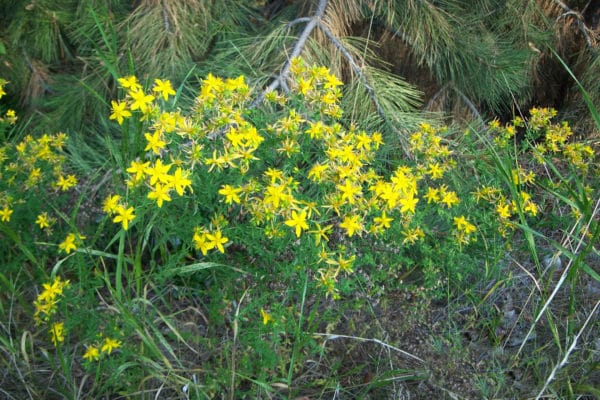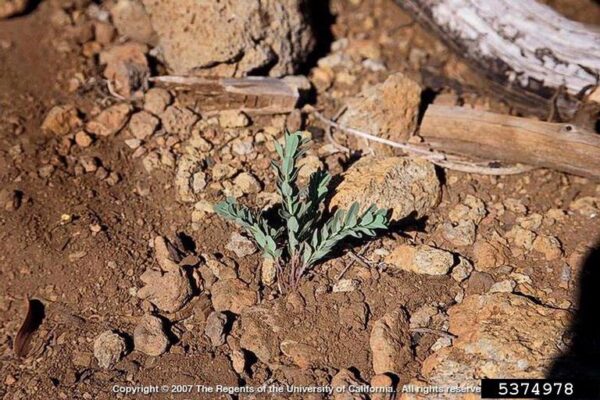Common St. John’s wort
Warning
Common St. John’s wort contains a poison that can cause light-coloured farm animals that eat it to have skin burns or blisters when exposed to sunlight.
About This Species
Common St. John’s-Wort is a perennial invasive plant that was introduced as an ornamental and medicinal herb from its native range of Europe, Asia and North Africa. It grows in dense patches which can crowd out natural plants and reduce the grasses that animals feed on. Common St. John’s-Wort spreads by lateral roots and can produce up to 100,000 seeds per plant.
How to Identify
Common St. John’s wort grows from 0.3–1 m in height.
It has dark green, opposite leaves which show tiny transparent dots when held up to the light.
Flowers are bright yellow, with 5 petals each, and grow in clusters at the top of branches. It turns a rusty red colour after finishing flowering late in the summer and autumn.
Take Action
Hand pulling or digging St. John’s wort before the flowers go to seed can reduce the spread of this plant. Remove as much of the root system as possible to help prevent regrowth.
-
If you need advice about invasive species on your property or you are concerned about reported invasives in your local area, contact your local government or regional invasive species organization.

PlayCleanGo
Learn about best practices
REPORT TO PROTECT BC’S BIODIVERSITY

Use the app
Observe and report to protect BC’s biodiversity

Report through this website
Use our form to tell us what you’re seeing and where.






